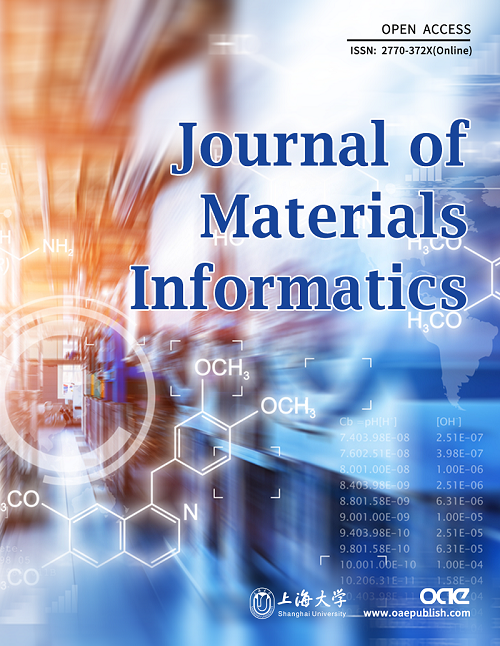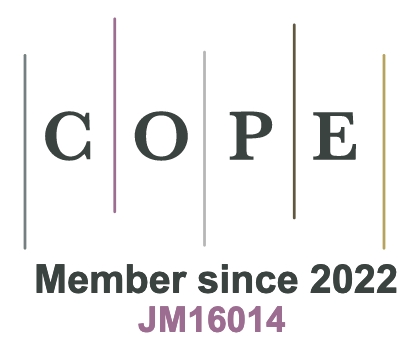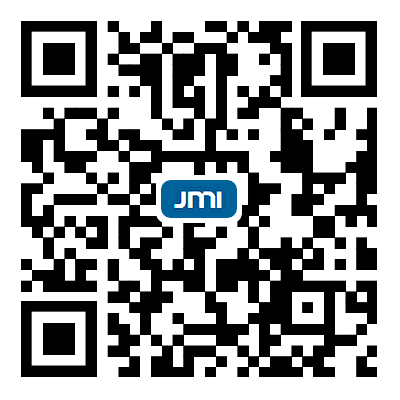REFERENCES
1. Zhang L, Li J, Wang Y, et al. Understanding the formation of equiaxed α during dynamic precipitation in titanium alloys by elastoplastic phase field simulation. J Mater Res Technol 2023;27:8181-96.
2. Liu G, Xie D, Wang S, Misra A, Wang J. Mesoscale crystal plasticity modeling of nanoscale Al–Al2Cu eutectic alloy. Int J Plasticity 2019;121:134-52.
3. Zhang J, Li H, Sun X, Zhan M. A multi-scale MCCPFEM framework: modeling of thermal interface grooving and deformation anisotropy of titanium alloy with lamellar colony. Int J Plasticity 2020;135:102804.
4. Zhang H, Liu J, Sui D, Cui Z, Fu M. Study of microstructural grain and geometric size effects on plastic heterogeneities at grain-level by using crystal plasticity modeling with high-fidelity representative microstructures. Int J Plasticity 2018;100:69-89.
5. Liu P, Wang Z, Xiao Y, et al. Integration of phase-field model and crystal plasticity for the prediction of process-structure-property relation of additively manufactured metallic materials. Int J Plasticity 2020;128:102670.
6. Kotha S, Ozturk D, Ghosh S. Parametrically homogenized constitutive models (PHCMs) from micromechanical crystal plasticity FE simulations: Part II: thermo-elasto-plastic model with experimental validation for titanium alloys. Int J Plasticity 2019;120:320-39.
7. Nguyen C, Cailletaud G, Barbe F, Marini B, Nguyen D, Phan H. Identification of crystal plasticity parameters for a non-irradiated and irradiated A508 bainite steel. Metall Res Technol 2021;118:204.
8. Li J, Romero I, Segurado J. Development of a thermo-mechanically coupled crystal plasticity modeling framework: application to polycrystalline homogenization. Int J Plasticity 2019;119:313-30.
9. Bandyopadhyay R, Prithivirajan V, Sangid MD. Uncertainty quantification in the mechanical response of crystal plasticity simulations. JOM 2019;71:2612-24.
10. Sedighiani K, Diehl M, Traka K, Roters F, Sietsma J, Raabe D. An efficient and robust approach to determine material parameters of crystal plasticity constitutive laws from macro-scale stress–strain curves. Int J Plasticity 2020;134:102779.
11. Zhang K, Holmedal B, Hopperstad O, et al. Multi-level modelling of mechanical anisotropy of commercial pure aluminium plate: crystal plasticity models, advanced yield functions and parameter identification. Int J Plasticity 2015;66:3-30.
12. Tu X, Shahba A, Shen J, Ghosh S. Microstructure and property based statistically equivalent RVEs for polycrystalline-polyphase aluminum alloys. Int J Plasticity 2019;115:268-92.
13. Azhari F, Wallbrink C, Sterjovski Z, et al. Predicting the complete tensile properties of additively manufactured Ti-6Al-4V by integrating three-dimensional microstructure statistics with a crystal plasticity model. Int J Plasticity 2022;148:103127.
14. Guery A, Hild F, Latourte F, Roux S. Identification of crystal plasticity parameters using DIC measurements and weighted FEMU. Mech Mater 2016;100:55-71.
15. Chakraborty A, Eisenlohr P. Evaluation of an inverse methodology for estimating constitutive parameters in face-centered cubic materials from single crystal indentations. Eur J Mech A Solid 2017;66:114-24.
16. Cauvin L, Raghavan B, Bouvier S, Wang X, Meraghni F. Multi-scale investigation of highly anisotropic zinc alloys using crystal plasticity and inverse analysis. Mater Sci Eng A 2018;729:106-18.
17. Cao B, Yang S, Sun A, Dong Z, Zhang T. Domain knowledge-guided interpretive machine learning: formula discovery for the oxidation behavior of ferritic-martensitic steels in supercritical water. J Mater Inf 2022;2:4.
19. Lu T, Li M, Lu W, Zhang T. Recent progress in the data-driven discovery of novel photovoltaic materials. J Mater Inf 2022;2:7.
20. Guo C, Hu X, Han X, et al. Laser precise synthesis of oxidation-free high-entropy alloy nanoparticle libraries. J Am Chem Soc 2024;146:18407-17.
21. Debnath A, Krajewski AM, Sun H, et al. Generative deep learning as a tool for inverse design of high entropy refractory alloys. J Mater Inf 2021;1:3.
22. Liu P, Huang H, Antonov S, et al. Machine learning assisted design of γ’-strengthened Co-base superalloys with multi-performance optimization. npj Comput Mater 2020;6:334.
23. Hu X, Zhao J, Li J, Wang Z, Chen Y, Wang J. Global-oriented strategy for searching ultrastrength martensitic stainless steels. Adv Theor Simul 2022;5:2100411.
24. Hu X, Chen Y, Lu J, et al. Three-step learning strategy for designing 15Cr ferritic steels with enhanced strength and plasticity at elevated temperature. J Mater Sci Technol 2023;164:79-94.
25. Xue D, Balachandran PV, Hogden J, Theiler J, Xue D, Lookman T. Accelerated search for materials with targeted properties by adaptive design. Nat Commun 2016;7:11241.
26. Yuan R, Liu Z, Balachandran PV, et al. Accelerated discovery of large electrostrains in BaTiO3-based piezoelectrics using active learning. Adv Mater 2018;30:1702884.
27. Hu X, Zhao J, Chen Y, Li J, Wang Z, Wang J. Continually reactivating iterative-projection method for instantiating microstructure from two-point statistics. Acta Mater 2022;238:118230.
28. Jiang M, Hu X, Li J, Wang Z, Wang J. An interface-oriented data-driven scheme applying into eutectic patterns evolution. Mater Design 2022;223:111222.
29. Hu X, Zhao J, Chen Y, et al. Structure-property modeling scheme based on optimized microstructural information by two-point statistics and principal component analysis. J Mater Inf 2022;2:5.
30. Xue D, Xue D, Yuan R, et al. An informatics approach to transformation temperatures of NiTi-based shape memory alloys. Acta Mater 2017;125:532-41.
31. Zhang H, Fu H, Zhu S, Yong W, Xie J. Machine learning assisted composition effective design for precipitation strengthened copper alloys. Acta Mater 2021;215:117118.
32. Goswami S, Anitescu C, Chakraborty S, Rabczuk T. Transfer learning enhanced physics informed neural network for phase-field modeling of fracture. Theor Appl Fract Mec 2020;106:102447.
33. Samaniego E, Anitescu C, Goswami S, et al. An energy approach to the solution of partial differential equations in computational mechanics via machine learning: concepts, implementation and applications. Comput Method Appl M 2020;362:112790.
34. Wei S, Kim J, Tasan CC. Boundary micro-cracking in metastable Fe45Mn35Co10Cr10 high-entropy alloys. Acta Mater 2019;168:76-86.
35. Ebrahimi M, Liu G, Li C, et al. Characteristic investigation of trilayered Cu/Al8011/Al1060 composite: interface morphology, microstructure, and in-situ tensile deformation. Prog Nat Sci Mater Int 2021;31:679-87.
36. Yan D, Tasan CC, Raabe D. High resolution in situ mapping of microstrain and microstructure evolution reveals damage resistance criteria in dual phase steels. Acta Mater 2015;96:399-409.
37. Lebensohn RA, Kanjarla AK, Eisenlohr P. An elasto-viscoplastic formulation based on fast Fourier transforms for the prediction of micromechanical fields in polycrystalline materials. Int J Plasticity 2012;32-3:59-69.
38. Lebensohn RA, Tomé CN, Castañeda PP. Self-consistent modelling of the mechanical behaviour of viscoplastic polycrystals incorporating intragranular field fluctuations. Philos Mag 2007;87:4287-322.
39. Lebensohn RA, Brenner R, Castelnau O, Rollett AD. Orientation image-based micromechanical modelling of subgrain texture evolution in polycrystalline copper. Acta Mater 2008;56:3914-26.
40. Eisenlohr P, Diehl M, Lebensohn R, Roters F. A spectral method solution to crystal elasto-viscoplasticity at finite strains. Int J Plasticity 2013;46:37-53.
41. Michel JC, Moulinec H, Suquet P. A computational method based on augmented lagrangians and fast Fourier transforms for composites with high contrast. Comput Model Eng Sci 2000;2:79-88.
42. James G, Witten D, Hastie T, Tibshirani R, Taylor J. Linear regression. An introduction to statistical learning. Cham: Springer International Publishing; 2023. pp. 69-134.
43. Cule E, De Iorio M. Ridge regression in prediction problems: automatic choice of the ridge parameter. Genet Epidemiol 2013;37:704-14.
46. Pisner DA, Schnyer DM. Chapter 6 - Support vector machine. In: Machine learning. Elsevier; 2020. pp. 101-21.
47. Auret L, Aldrich C. Interpretation of nonlinear relationships between process variables by use of random forests. Miner Eng 2012;35:27-42.
49. Deringer VL, Bartók AP, Bernstein N, Wilkins DM, Ceriotti M, Csányi G. Gaussian process regression for materials and molecules. Chem Rev 2021;121:10073-141.
50. Schulz E, Speekenbrink M, Krause A. A tutorial on Gaussian process regression: modelling, exploring, and exploiting functions. J Math Psychol 2018;85:1-16.
52. Jiang M, Chen Y, Yang Z, et al. Crystal plasticity modeling of deformation behavior of Al–Al2Cu eutectics based on high-fidelity representative microstructures. J Mater Res Technol 2024;29:5259-70.
53. Reed R. Aluminium 2. A review of deformation properties of high purity aluminium and dilute aluminium alloys. Cryogenics 1972;12:259-91.
54. Pham HH, Williams ME, Mahaffey P, Radovic M, Arroyave R, Cagin T. Finite-temperature elasticity of fcc Al: atomistic simulations and ultrasonic measurements. Phys Rev B 2011;84:064101.
56. Roters F, Eisenlohr P, Hantcherli L, Tjahjanto D, Bieler T, Raabe D. Overview of constitutive laws, kinematics, homogenization and multiscale methods in crystal plasticity finite-element modeling: theory, experiments, applications. Acta Mater 2010;58:1152-211.
57. Segurado J, Lebensohn RA, Llorca J, Tomé CN. Multiscale modeling of plasticity based on embedding the viscoplastic self-consistent formulation in implicit finite elements. Int J Plasticity 2012;28:124-40.
58. Balachandran PV, Xue D, Theiler J, Hogden J, Lookman T. Adaptive strategies for materials design using uncertainties. Sci Rep 2016;6:19660.
59. Simmons G. Single crystal elastic constants and calculated aggregate properties. Southern methodist university press; 1965.
60. Mahata A, Asle Zaeem M. Effects of solidification defects on nanoscale mechanical properties of rapid directionally solidified Al-Cu Alloy: a large scale molecular dynamics study. J Cryst Growth 2019;527:125255.
61. Davidson CJ, Smith IO, Chadwick GA. Effect of heat treatment and interlamellar spacing on the tensile deformation of the aligned Al CuAl2 eutectic. Acta Metall 1980;28:61-73.
63. Cheng J, Yun Y, Rui J. Enhanced tensile plasticity in ultrafine lamellar eutectic Al-CuBased composites with α-Al dendrites prepared by progressive solidification. Appl Sci 2019;9:3922.
64. Pattnaik A, Lawley A. Deformation and fracture in AI-CuAl2 eutectic composites. Metall Trans 1971;2:1529-36.
65. Zhang X, Li S, Guo X, Wang H, Yu Q, Wu P. Effects of texture and twinning on the torsional behavior of magnesium alloy solid rod: a crystal plasticity approach in comparison with uniaxial tension/compression. Int J Mech Sci 2021;191:106062.
66. Wang H, Zhang X, Wu W, et al. On the torsional and coupled torsion-tension/compression behavior of magnesium alloy solid rod: a crystal plasticity evaluation. Int J Plasticity 2022;151:103213.
67. Xu Y. A non-local methodology for geometrically necessary dislocations and application to crack tips. Int J Plasticity 2021;140:102970.
68. Yu X, Xu Y, Morales-espejel G, Dunne F, Dini D. On the importance of crystal plasticity finite element discretisation for the identification of crack initiation in RCF using energy-based criteria. Comput Mater Sci 2024;232:112651.
69. Garatti S, Bittanti S. A new paradigm for parameter estimation in system modeling. Adapt Control Signal 2013;27:667-87.
70. Sin G, De Pauw DJ, Weijers S, Vanrolleghem PA. An efficient approach to automate the manual trial and error calibration of activated sludge models. Biotechnol Bioeng 2008;100:516-28.
71. Shahmardani M, Vajragupta N, Hartmaier A. Robust optimization scheme for inverse method for crystal plasticity model parametrization. Materials 2020;13:735.
72. Depriester D, Goulmy J, Barrallier L. Crystal plasticity simulations of in situ tensile tests: a two-step inverse method for identification of CP parameters, and assessment of CPFEM capabilities. Int J Plasticity 2023;168:103695.








